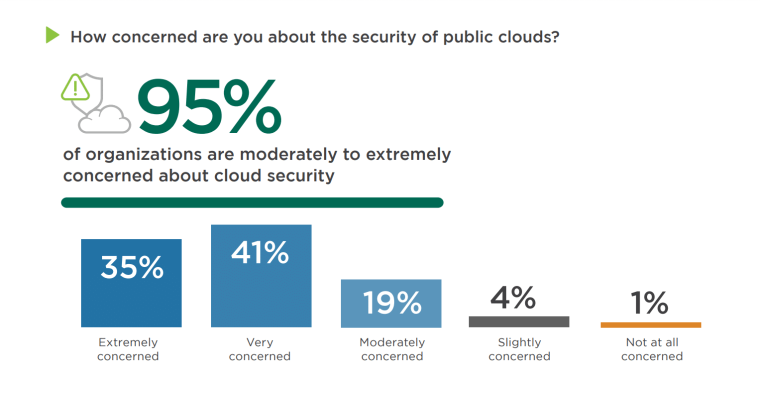In today’s fast-paced business climate, digital transformation, or the integration of digital technologies into business operations, isn’t just a buzzword. It’s a strategic imperative to know digital transformation trends for businesses wanting to enhance productivity, boost revenue growth, and secure a competitive advantage.
No matter where you are on your digital journey, keeping up with emerging digital transformation strategy trends is the key to making informed business decisions and incorporating growth-enabling technologies into your operations. At Business2Community, we’ve done the heavy lifting to deliver the top digital transformation trends for 2025,ensuring you have the insights to future-proof your business.
Key Digital Transformation Trends
- Investments in digital transformation will amount to $2.1 trillion in 2023 and by 2026, spending is expected to hit $3.4 trillion.
- The potential economic value of AI stands at between $17 trillion and $26 trillion.
- By 2025, organizations will build 70% of their new applications using low-code or no-code platforms, up from less than 25% in 2020.
- By adopting the cloud, 42% of companies have achieved outcomes such as cost savings, business enablement, and improved service levels.
- Customer experience efforts result in a 6% increase in sales revenue, a 10% increase in order frequency, and a 2.5% increase in average order value.
What are 2025’s Digital Transformation Trends?
As companies respond to market complexities, elevated levels of competition, and shifting customer demands, digital transformation has become a priority, with over 75% of global organizations adopting the process.
According to Statista, investments in digital transformation amounted to $2.1 trillion in 2023. By 2026, spending is expected to hit $3.4 trillion.
The right combination of digital transformation actions could generate up to $1.25 trillion in new value, while the wrong combination could erode value by over $1.5 trillion.
Below, we cover 10 key digital transformation trends including AI, low-code, cloud computing, IoT, and more so you can stay on the winning side of digital transformation.
1. Digital Transformation Challenges Mount
While 89% of global companies have a digital transformation strategy in place, they’ve only captured 31% of the expected revenue lift and 25% of the expected cost savings.
According to a 2023 Prophet report, limited budgets (34%) and resistance culture (27%) remain the top obstacles to digital transformation success. Additionally, a lack of workforce transformation and coordination across business functions continues to hinder digital transformation progress.
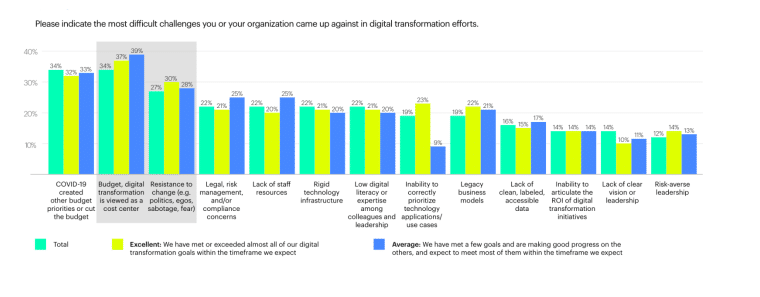
In 2022, KPMG research found that 77% of respondents were considering pausing or reducing digital transformation investment due to escalating economic uncertainty.
As of 2023, 67% of technology leaders in another KPMG report said they were expected to do more with smaller budgets compared to 2022.
According to the same report, 38% of respondents had senior leadership buy-in for the deployment of emerging tools and technologies. Although this figure increased from 10% in 2022, greater strategic alignment is needed for a successful digital transformation journey.
In an Expleo report published in 2023,44 % of businesses are missing targets for user acceptance and /or improving customer satisfaction with their transformation projects.
Likewise, in an IBM report, 56% of organizations are struggling with different platform requirements across their business, and 49% with siloed data sources that lack sharing and transparency. As a result,many companies aren’t fully exploiting all their data or technology investments.
Overall, digital transformation is challenging because it requires organizations to:
- Rethink their business models.
- Change their organizational structures and practices.
- Become more data-driven.
- Embrace a culture of continuous change.
Consequently, in an increasingly volatile digital age, more companies are turning to digital transformation service providers to help them formulate a successful digital transformation roadmap.
2. Business Impact of Programs Increases
While digital transformation initiatives are challenging to implement, those who get it right experience positive business outcomes. In a 2023 KPMG report, an average of 63% of respondents reported an increase in performance after adopting digital technology.
The largest group of respondents saw a performance improvement uplift of over 10%, up from the most common rate of around 2.5% in 2022.
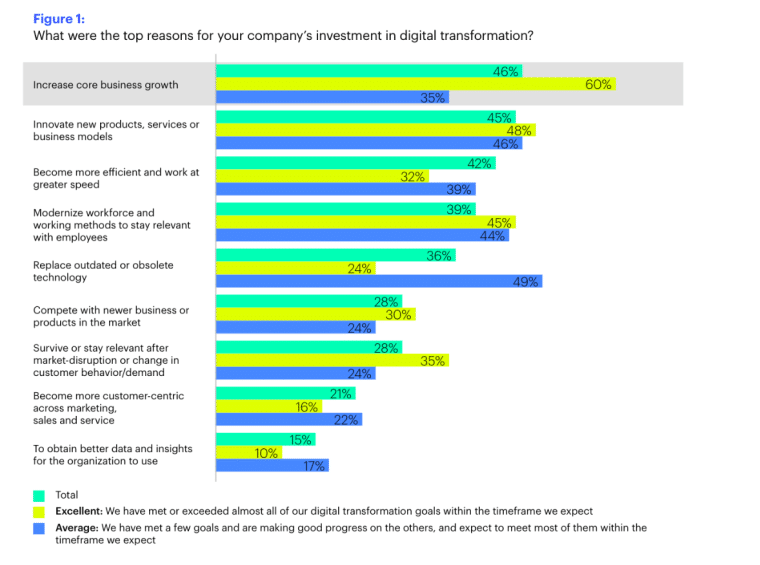
In the same report, the technologies that have had the most impact on profitability or performance over the last 24 months include:
- Data analytics/data-driven decision-making – 66%
- Cybersecurity – 64%
- Public cloud and XaaS technologies – 64%
- AI and automation – 63%
- VR/AR and the metaverse – 60%
- Low-code/no-code – 59%
Deloitte has also reported that organizations prioritizing core factors such as digital strategy, technology aligned to strategy, and digital change see a 5% lift in market value relative to their peers.
3. Artificial Intelligence is Leading Transformation
As it is driving rapid innovation across industries, artificial intelligence (AI) stands out as a key trend in digital transformation. 87% of businesses agreed that AI was playing a crucial role in achieving business goals in 2022, such as increasing revenue, enhancing operational efficiency, and boosting customer experience.
Additionally, 25% of respondents in a 2023 McKinsey survey credited 5% or more of their earnings to AI.
The average number of AI capabilities used in business, such as natural language generation, predictive analytics, and computer vision, has doubled from 1.9 in 2018 to over 3.8 in 2022, according to McKinsey.
As per Stanford’s 2023 AI Index:
- 39% of businesses are using robotic process automation (RPA) to automate repetitive tasks.
- 34% of businesses are using computer vision to analyze visual data.
- 33% of businesses are using natural language text understanding to analyze text data.
- 33% of businesses are using virtual agents to interact with customers.
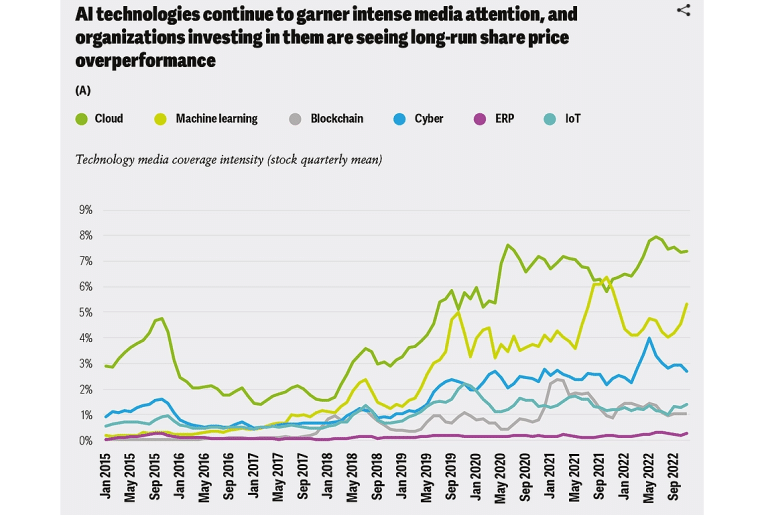
The global AI market is poised to grow at a CAGR of 21.6% from $515.31 billion in 2023 to $2 trillion by 2030. Meanwhile, the potential economic value of AI stands at between $17 trillion and $26 trillion.
AI-Enabled Development
AI-augmented development tools streamline development and enhance app testing capabilities. This workflow automation allows software engineers to spend less time writing code and more time on higher-level activities, such as designing and creating business applications.
By 2028, 75% of enterprise software engineers will use AI coding assistants, up from less than 10% in early 2023, says Gartner. AI-assisted software engineering improves developer productivity and enables tech companies to address the increasing demand for business software.
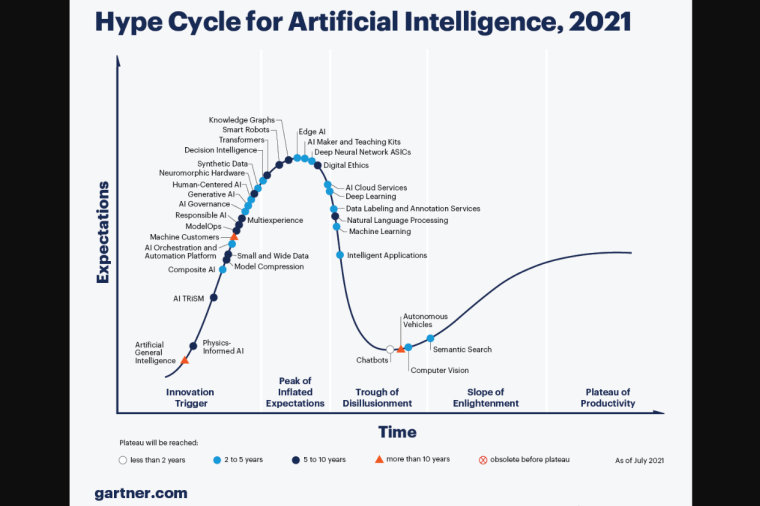
Machine Learning
Machine learning (ML) enables AI models to learn, adapt, and become more accurate in making predictions without human intervention.
According to McKinsey, MLOps, or the practices needed to scale and sustain ML applications in an organization, can shorten production times by 8x to 10x and reduce development resources by up to 40%.
By 2024, 60% of enterprises in the tech industry will have implemented MLOps. As more companies harness the power of ML, the global ML market is expected to surge from $26.03 billion in 2023 to $225.91 billion by 2030.
Generative AI
Generative AI enables machines to create content such as text or images by learning patterns from existing data. Interest in this subset of AI has increased 3x over the last two years, McKinsey has noted.
According to Gartner, democratizing access to generative AI across organizations allows for the automation of a broad range of tasks. This, in turn, boosts productivity, reduces costs, and offers new opportunities for growth.
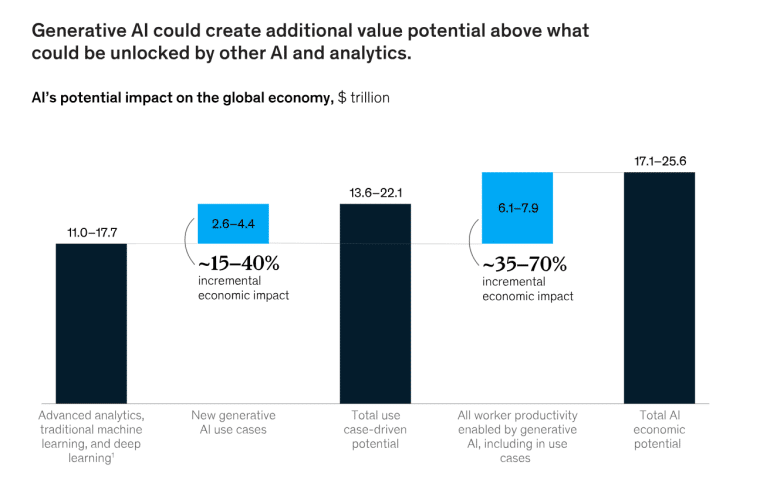
Generative AI also integrates data seamlessly into applications, offering predictive insights and recommendations within user interfaces.
By 2026, more than 80% of enterprises will use generative AI APIs, models, and/or deploy generative AI-enabled applications in production environments, an increase from less than 5% in 2023.
In addition, 30% of new apps will use AI to drive personalized and adaptive user interfaces, up from under 5% today.
Robotic Process Automation
The robotic process automation (RPA) market is expected to grow from $3.10 billion in 2023 to $11.37 billion by 2028, at a CAGR of 29.70%. RPA supports digital transformation by automating tasks in various industries.
It helps businesses reshape their operations, enhance responsiveness, and address operational challenges. This, in turn, contributes to improved business performance and customer experience.
4. Low-code and No-code are Gaining Traction
Low-code, no-code software development platforms are empowering the transformation of business processes. These platforms allow developers to create applications through graphic user interfaces instead of traditional coding methods.
According to Statista:
- 58% of legacy systems are being transformed by low-code apps.
- 38% of organizations are using low-code for data modeling and visualization.
- 36% of organizations are using low-code for productivity apps./li>
Low-code and no-code platforms build cloud-native applications 10x faster with 70% resource savings, according to Alpha Software. In addition,89% of IT business leaders surveyed by Microsoft say that low-code increases efficiency, while 87% say low-code helps reduce costs.
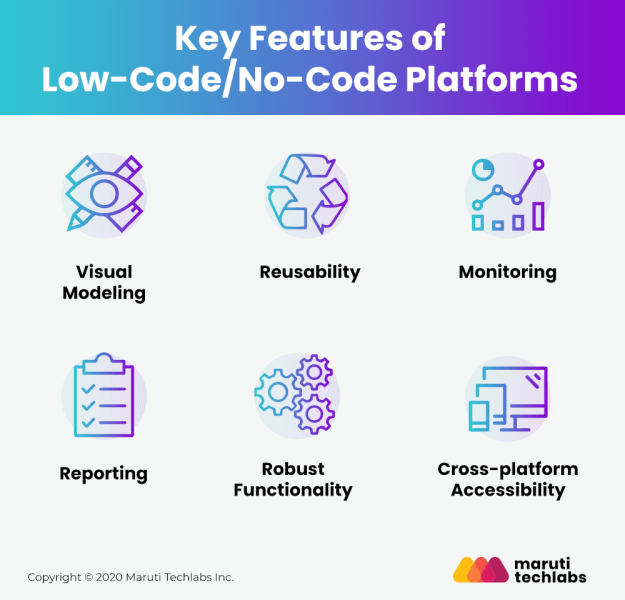
Statista has predicted that the low-code market will grow at a CAGR of 26.1%, surpassing $32 billion in 2024. By 2025, Gartner anticipates that organizations will build 70% of their new applications using low-code no-code platforms, up from less than 25% in 2020.
By 2026,non-developers will account for 80% of users of low-code no-code tools, compared with 60% in 2021
Overall, the global low-code platform market is projected to reach $65 billion by 2027, highlighting the transformative power of this technology.
5. Edge Computing is Driving Efficiency
Edge computing is set to become a key driver of growth and innovation, with 65% of companies already leveraging the technology to enhance business processes and improve efficiency. The most advanced edge adopters are 4x more innovative, 9x more efficient, and nearly 7x more cost-effective.
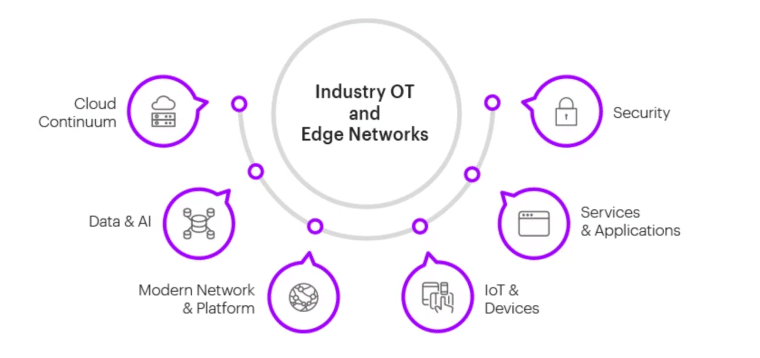
83% of respondents in an Accenture report believe that edge computing will be essential to remaining competitive in the future. Edge computing also enhances data privacy and security by reducing the attack surface, enabling real-time threat detection, and complementing traditional security measures.
In fact, Gartner predicted in 2021 that organizations adopting edge architecture to secure their networks will experience a 25% reduction in successful cyberattacks. As a result, spending on edge computing is expected to reach $208 billion in 2023, an increase of 13.1% over 2022, according to IDC.
By 2026, spending on edge computing will hit almost $317 billion. In addition, the edge computing market is expected to grow at a CAGR of 15.6% from $13.49 billion in 2023 to $27.85 billion by 2028, says Mordor Intelligence.
6. Cloud Computing Powers Transformation
Cloud computing has emerged as an accelerator of growth, agility, and competitive edge. According to an Accenture report, 90% of companies have achieved a significant measure of expected cloud value.
42% of companies have fully achieved key outcomes such as cost savings, business enablement, and improved service levels – an overall increase of 7% from 2018 to 2023.
As per a 2023 McKinsey report, most companies will allocate 80% of their IT budget to cloud services in 2024.
With cloud adoption expanding and organizations’ needs evolving, major cloud software providers are offering multi and hybrid-cloud solutions to accommodate diverse workloads, enhance scalability, and provide flexibility.
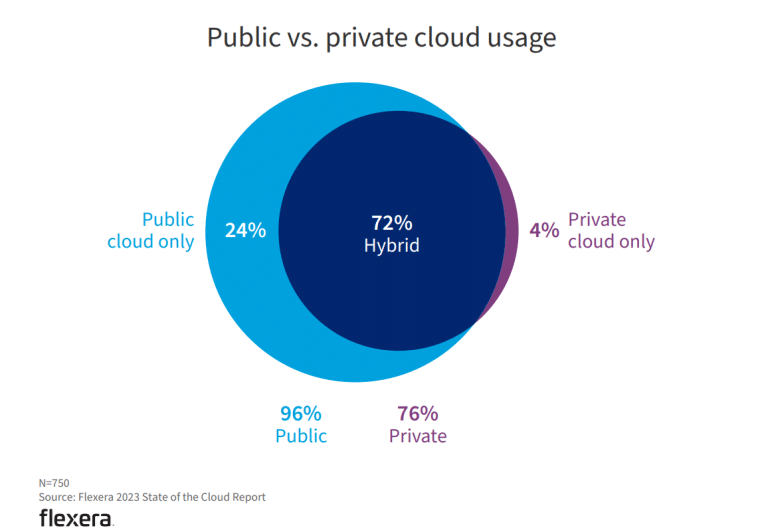
HashiCorp noted in 2023 that 76% of organizations had adopted multi-cloud architecture, and this number was expected to increase to 86% by 2024. 73% of organizations said multi-cloud infrastructure has advanced their business goals.
Common multi-cloud drivers include:
- Reliability – 51%
- Cost reduction – 48%
- Mitigating security risks and governance – 45%
- Digital transformation – 45%
- Scalability – 45%
Hybrid cloud combines the power of public and private cloud solutions, providing increased flexibility, scalability, and security. Hybrid cloud infrastructure is now used by 72% of organizations, up from just 58% in 2019, reported Flexera in 2023
Businesses are also embracing cloud transformation through various as-a-service solutions.
- Software as-a-service (SaaS): Migrating software applications to the cloud through SaaS providers eliminates the need to manage software on-premises, thereby reducing costs.
- Infrastructure-as-a-Service (IaaS): Shifting on-premises infrastructure to IaaS providers reduces capital expenses and maintenance costs.
- Platform-as-a-service (PaaS): Leveraging PaaS streamlines the development processes and enhances scalability, allowing for more efficient deployment and management of applications.
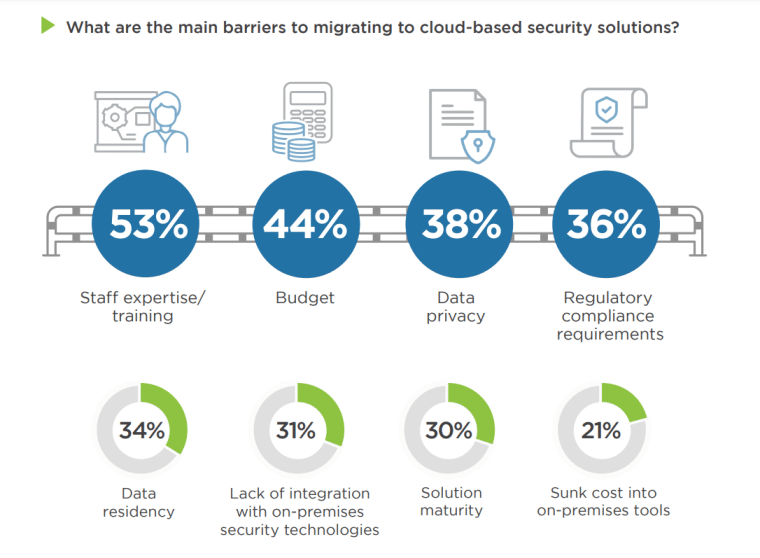
Everything-as-a-Service (XaaS) combines the benefits of IaaS, SaaS, and PaaS into a comprehensive, flexible, and scalable service model that provides a range of resources and applications on demand. The top three advantages of XaaS according to KPMG survey respondents are:
- Better data management.
- Accelerated innovation.
- Reduced carbon footprint.
68% of respondents in the same survey have increased their profitability or performance by using XaaS and 63% say the risk of moving to XaaS is worth it for the opportunities and returns.
Meanwhile, industry cloud platforms (ICPs) or vertical cloud platforms are specialized cloud technologies designed to meet the unique requirements of specific industries.
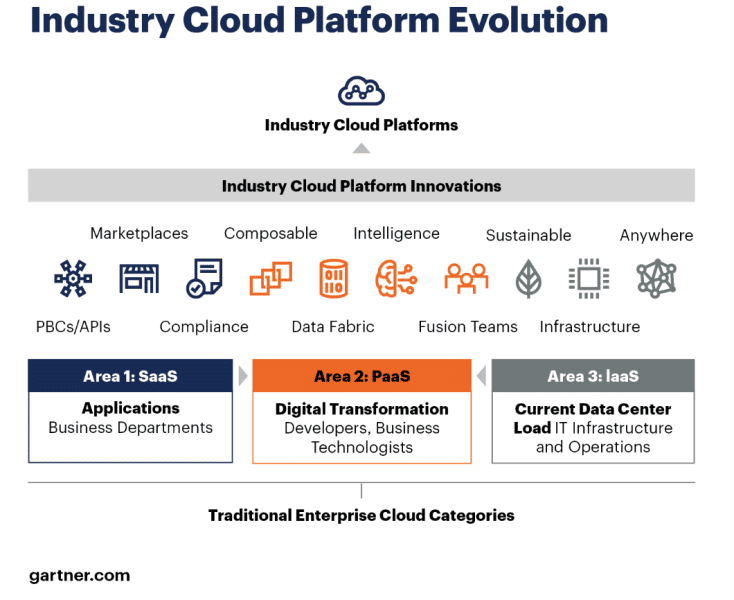
By leveraging ICPs businesses can achieve industry-specific goals, while remaining flexible and agile enough to respond to shifting market trends. By 2027, more than 50% of enterprises will use industry cloud platforms to accelerate their business initiatives, up from less than 15% in 2023, says Gartner.
7. Composability Takes Center Stage
Composability refers to the ability to create business capabilities that can be adapted to meet changing needs. It fosters agility, innovation, and resilience in the face of disruption.
According to Gartner, composability is one of the core pillars of business strategy with 60% of mainstream organizations citing it as a key strategic objective beyond 2023.

Composability also allows organizations to leverage existing assets and data to create new value and experiences for customers and employees. Organizations that adopt a composable approach stand to outpace competition by 80% in the speed of new feature implementation.
Gartner reported in 2023 that composable applications will also accelerate business innovation. Specifically:
- In 2024, half of industry cloud platform providers will leverage composability for vertical offerings and adaptable customer deployments.
- By 2025, 60% of new SaaS designs will support both UI-first and API-first access, reflecting a common trait of composability in cloud applications.
- In 2026, the top 20 cloud platform and SaaS providers will offer component marketplaces, allowing customers to pursue composable strategies with differentiation based on quality, convenience, and security.
8. Customer Experience Goes Mainstream
In an Expleo report, delivering the best customer experience remains one of the highest-ranked corporate strategies for the second year.
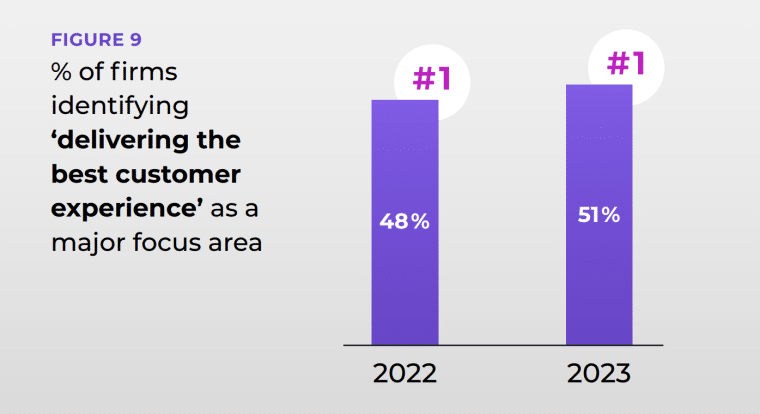
As per a 2023 KPMG report, a desire for improved customer centricity is a common driver for digital transformation.
- 57% of respondents say improving upselling and cross-selling opportunities is a leading driver for their digital transformation efforts.
- 51% say that the need to convert prospects into customers drives transformation.
- 60% say customer expectations of stronger data privacy and cybersecurity strongly influence their strategic priorities.
In an IBM report, organizations that prioritize customer experience (CX) reported 3x higher revenue growth over the past two years.
Additionally, CX efforts result in a 6% increase in sales revenue, a 10% increase in order frequency, and a 2.5% increase in average order value.
Customer Data Platforms
A customer data platform (CDP) is a single source of customer data. Businesses can leverage CDPs to understand customer behavior and predict market trends, enabling more personalized and engaging marketing campaigns. They are also a rich repository of information that can be used to enhance customer experiences across various business departments.
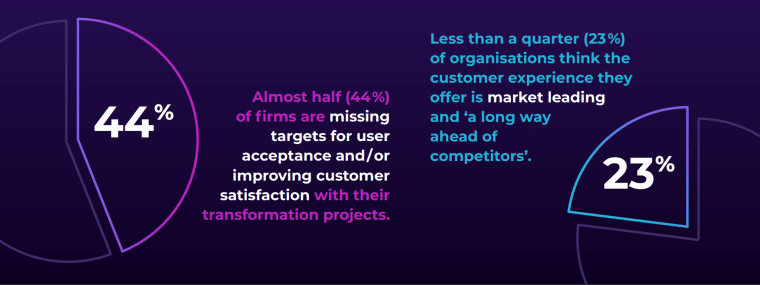
Digital Payments
The rise of the digital economy has given businesses ample opportunities to enhance customer experience. Digital payments and buy now, pay later (BNPL) are part of the finance industry’s many digital transformation initiatives.
The digital payments market is projected to reach $9.46 trillion in 2023 and grow at a CAGR of 11.8% to exceed $14 trillion by 2027.
The BNPL industry is projected to grow from $30.38 billion in 2023 to $122.19 billion by 2030, at a CAGR of 22%.
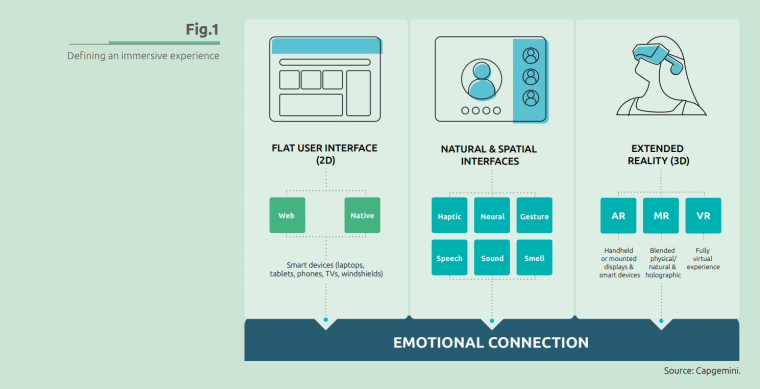
VR, AR and the Metaverse
With customers demanding more immersive and engaging experiences than conventional brick-and-mortar outlets or ecommerce platforms can offer, transformative technologies, such as augmented reality (AR), virtual reality (VR), and the metaverse are gaining traction.
McKinsey estimated the metaverse will generate up to $5 trillion in impact by 2030. While the impact varies by industry, an estimated $2.6 trillion is anticipated to impact ecommerce.
9. IoT Adoption is Picking Up Momentum
The internet of things (IoT) is set to revolutionize the way businesses operate. By connecting physical devices and systems, IoT will drive massive data collection and data analysis in real time, giving businesses across industries:
- Access to valuable insights.
- The ability to automate processes.
- Greater operational efficiency.
- New avenues of revenue generation.
There will be over 16.7 billion connected IoT devices in 2023, and by 2025, this will increase to over 55.7 billion devices.
The global IoT market, which has shown significant growth over the last few years, is expected to surge from $478.36 billion in 2022 to $2.4 trillion by 2029.

The potential economic value of IoT is significant, with McKinsey estimating that it could reach $12.5 trillion by 2030.
Driving this digital transformation trend is the widespread adoption of 5G, which supports IoT networks by providing speeds up to 100x faster, increasing traffic capacity by 100x, and reducing latency by up to 10x.
According to Statista, 72% of industrial organizations consider IoT the most important component of Industry 4.0.
Industry 4.0 solutions powered by IoT devices can generate 8.5% in operational cost savings and yield returns ranging from 10x to 20x over a 5-year period.
10. Cybersecurity Efforts Intensify as Threats Increase
With companies turning to new technologies and incorporating mobile apps into their business models, the attack surface is expanding and creating new vulnerabilities.
For example:
- Malware, ransomware, phishing, and data breaches saw a steep rise in 2023.
- Crypto-jacking attack volumes have more than tripled to a new record high, increasing by over 399% to more than 332 million hits.
- Incidents in cloud environments have nearly tripled, increasing by 288% between 2022 and 2023.
- IoT devices have seen a 400% increase in malware attacks in 2023.
- 80% of phishing sites now either specifically target mobile devices or are built to function on both mobile devices and desktops.
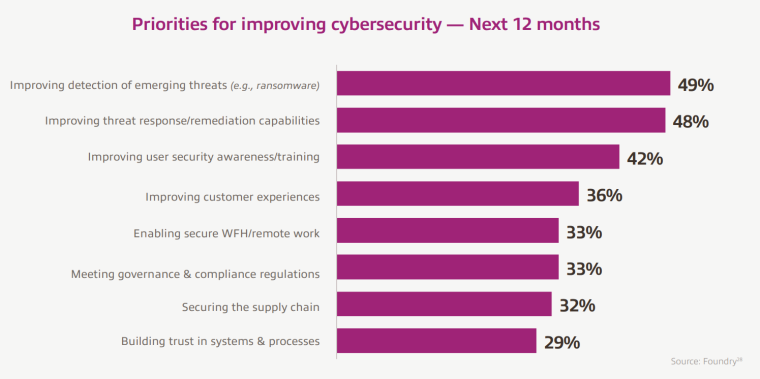
Overall, damage from cyber attacks is expected to amount to nearly $10.5 trillion by 2025. In response, digital leaders are prioritizing data security, threat detection, threat response, and user awareness training.
Zero-trust frameworks now form the foundation for many security programs. According to a 2023 CyberEdge report, 80% of organizations have adopted zero trust network access, saving them close to 20% in average breach costs.
Zero trust network access (ZTNA), a rapidly expanding network security method, is poised to grow by 31% in 2023 and will fully replace VPNs by 2025.
Further, Gartner has identified continuous threat exposure management (CTEM) as crucial for helping digital businesses identify and prioritize threats. By 2026, organizations prioritizing CTEM will experience a 66% reduction in breaches.
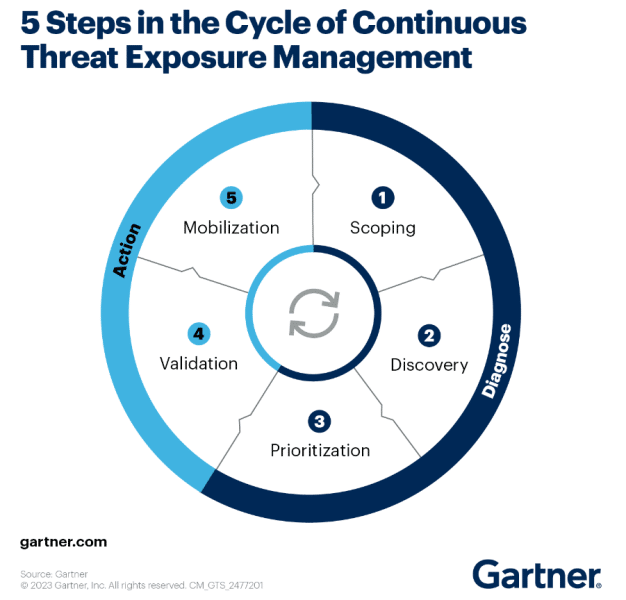
Many organizations are also turning to AI, ML, and NLP to bolster automated security systems, aid automatic threat detection, and enhance real-time data monitoring.
According to IBM, organizations that use security AI and automation capabilities:
- Have a 108-day shorter time to identify and contain a breach.
- Report $1.76 million lower data breach costs.
According to an ISC2 report published in 2023, 95% of security professionals are concerned about public cloud management and security.
Barriers to cloud-based security are primarily people and process-related, rather than technology-focused. The lack of cybersecurity staff expertise and training (53%) remains the highest barrier, followed by budget challenges (44%) and data privacy issues (38%).
Looking ahead, cloud providers will focus on better encryption, authentication, and disaster recovery strategies. Cloud security solutions, such as security access service edge (SASE), will bolster security postures, allowing businesses to leverage the transformative power of cloud computing.
How to Find Digital Transformation Trends
Although we’ve provided key digital transformation trends for 2025 and beyond, it’s important to be able to find new trends as the industry shifts. That’s why we’ve compiled some of the best ways for you to keep up with the digital solutions and advanced technologies driving digital transformation trends.
Let’s dive in.
Authority sites and newsletters
Industry sites are one of the best ways to keep up with digital transformation trends. These include:
- Deloitte’s Digital Transformation Insights: Discover key insights on how to capture the full value of technology and innovation to radically transform your business.
- McKinsey Digital Insights: Explore McKinsey’s collection of insights on how to drive successful digital transformations.
Newsletters such as BCG’s Tech + Us, provide monthly insights for harnessing the full potential of AI and tech.
YouTube Channels
To keep up with the latest digital transformation trends and how they apply to your digital transformation strategy, follow content creators in the space like Eric Kimberling on YouTube. Eric and his team at Third Stage Consulting Group provide insights to drive digital transformation success and avoid the failures caused by biased and ineffective advice.
Podcasts
Harness the power of digital transformation with insights from Gartner. ThinkCast is a podcast channel powered by Gartner, the world’s leading advisor on technology-driven business success. The podcast features key trends and conversations with experts and newsmakers in IT and business.
The Future of Digital Transformation
The future of digital transformation is characterized by the convergence of growth-enabling technologies like AI, ML, cloud computing, and IoT. Beyond enabling automation and data-driven decision-making, digital transformation will power sustainability efforts and total experience (TX).
Sustainability
As businesses come under increased legislative and societal pressure to address sustainability issues, they will turn to technologies such as AI and cloud computing to solve key sustainability challenges, such as cost management, reporting, and consumption.
Total Experience
Total experience (TX) integrates four experience disciplines: user experience (UX), customer experience (CX), employee experience, and multi-experience (MX), for a more holistic approach to digital transformation.
Against the backdrop of heightened customer experience expectations, macro-instability, and economic uncertainty, businesses will turn to TX to optimize performance and increase stakeholder satisfaction.

